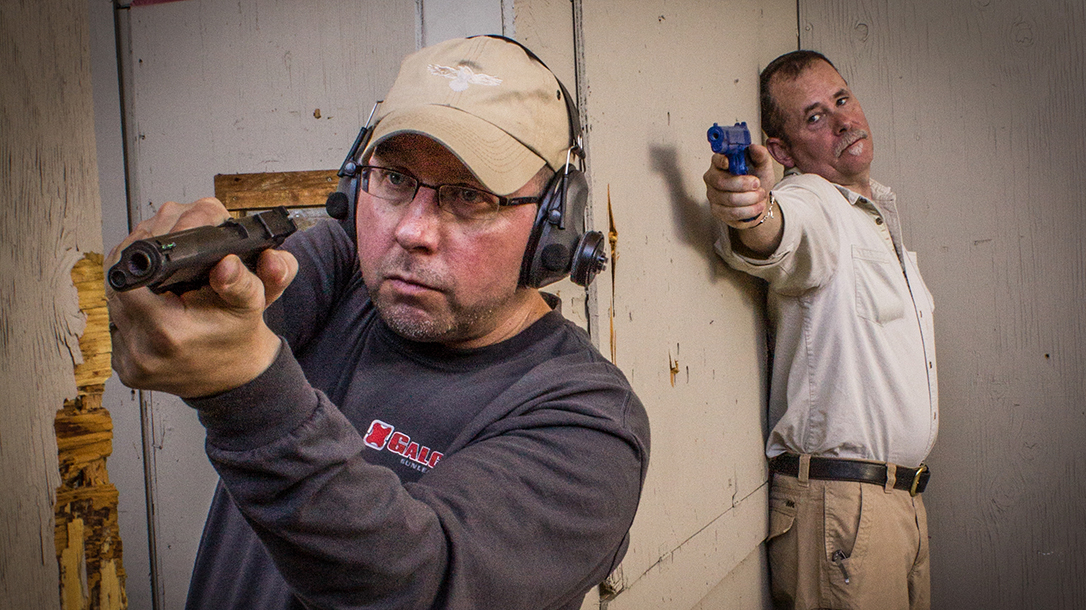Life is full of corners and you may have to deal with one during a defensive situation. Knowing the ins and outs of clearing corners is an important and life-saving skill.
Remember, corners are not just relegated to buildings; a corner can be a vehicle, a tree, or even a refrigerator. Learning about clearing corners is best accomplished at a school like Gunsite Academy, not by watching reruns of “Miami Vice” on late-night TV.
Advertisement — Continue Reading Below
Here are 10 tips for negotiating corners from retired police officer and Gunsite Academy instructor Chris Weare.
Tip #1: Slicing the Pie
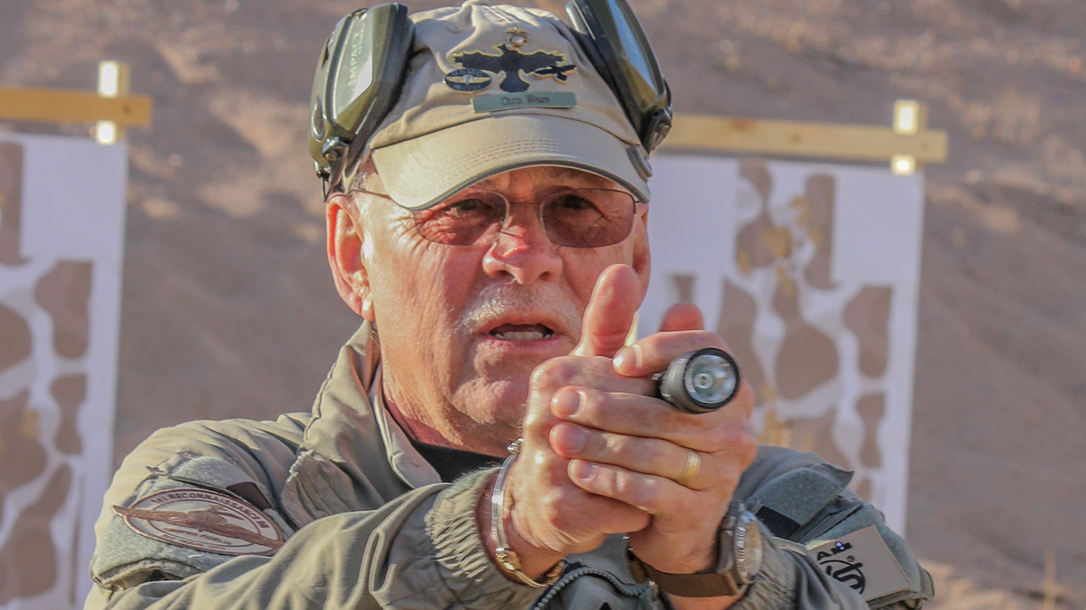
You deal with corners using a technique called “slicing the pie.” This means you incrementally move and look so you increasingly see what is around the corner, little by little. Note that this doesn’t mean you creep right up to the edge of a corner and stick your gun around it. Always “pie” from as safe a position as possible.
Advertisement — Continue Reading Below
Tip #2: Use Corners as Cover
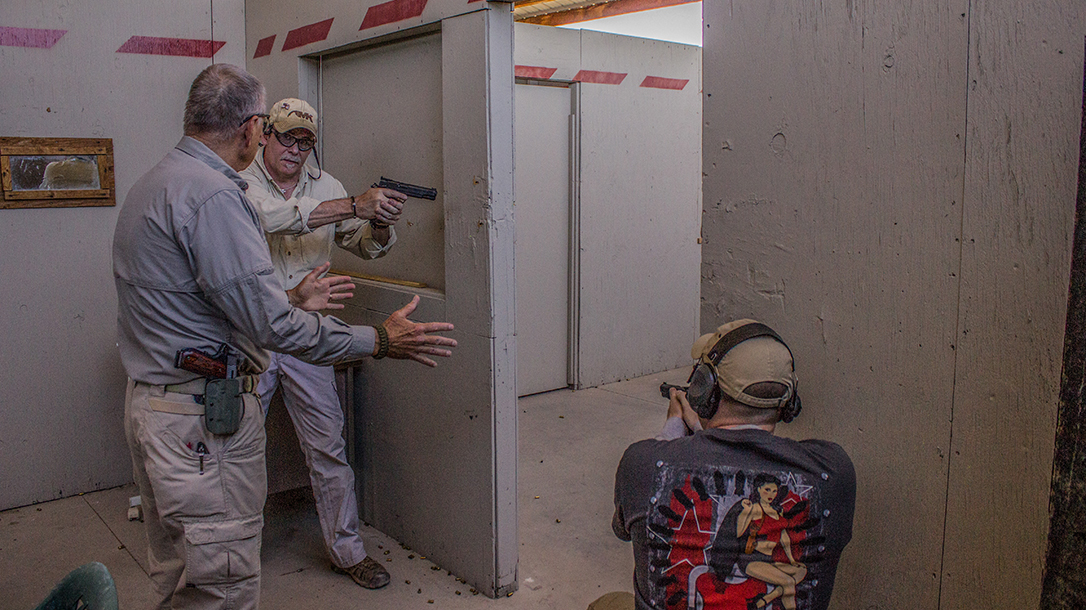
One thing to remember about any corner is that what you cannot see cannot see you in return. Unless a loved one is wailing for your help just out of sight, there’s no real rush. The same corner protecting what might be a bad guy is also protecting you, too. Be patient, young grasshopper, and take time clearing corners if the situation allows.
Tip# 3: Look Beyond the Corner
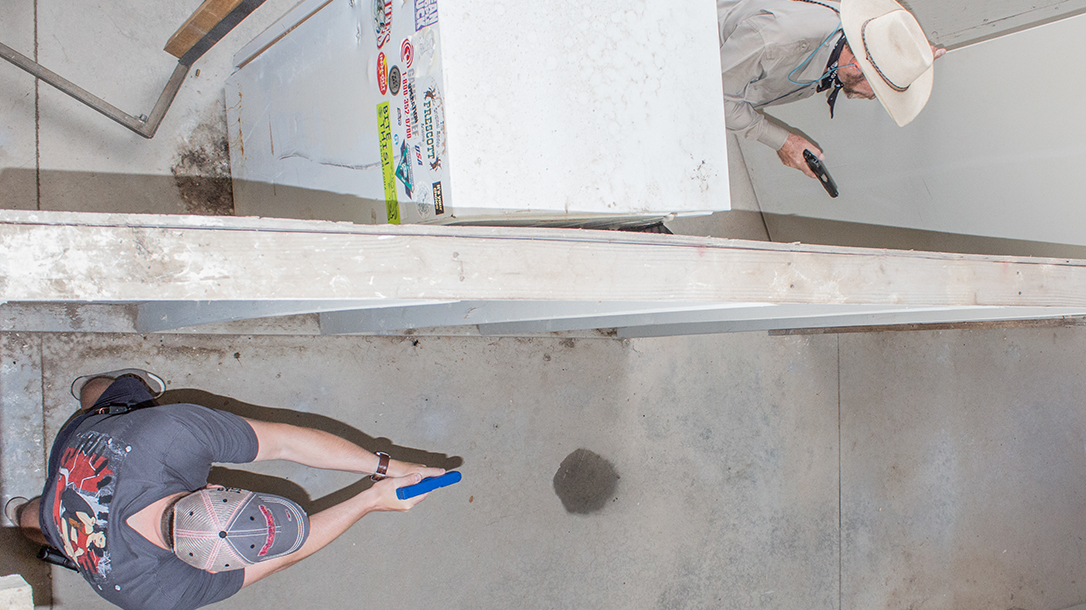
Advertisement — Continue Reading Below
Prior to approaching the corner, attempt to see as much of the space beyond it as possible. Don’t focus on the corner itself; as you move toward a corner, you can look or “pie” some of the space beyond it from a distance. Unless a potential assailant is attempting to hide from you, they may be visible because they’ve neglected to appreciate tip No. 4.
Tip #4: Don’t Linger in Doorways
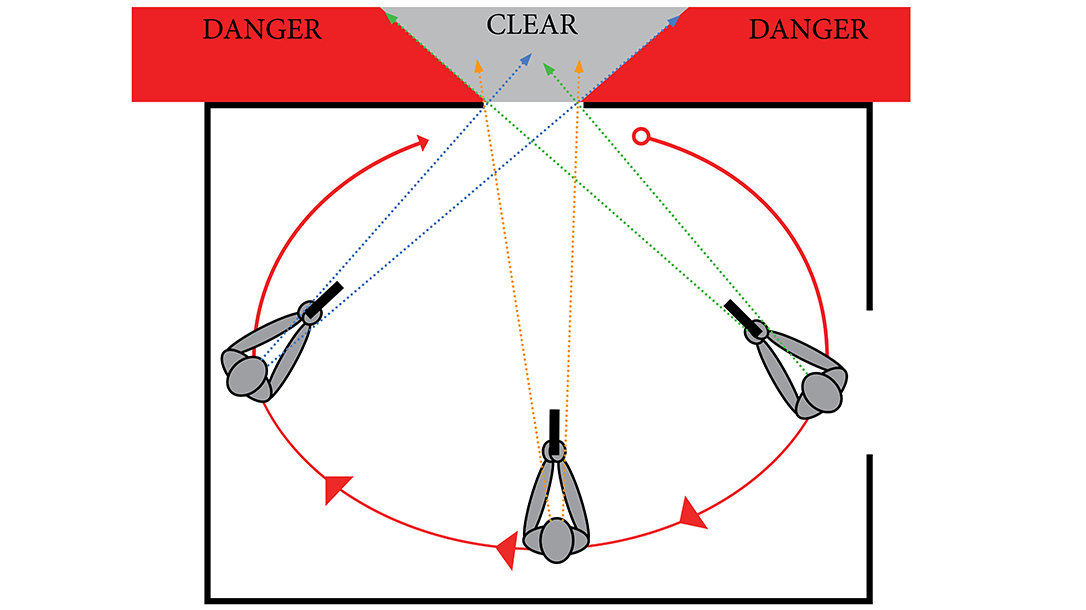
Limit the amount of time spent in doorways or openings as much as possible. Doorways are often called “fatal funnels.” This is because that’s where people look, they emit light, and light gives away your location. Don’t stand in a doorway; “pie” as much of the corner as possible before you step into the doorway. Don’t linger in the light.
Advertisement — Continue Reading Below
Tip #5: Partner Up
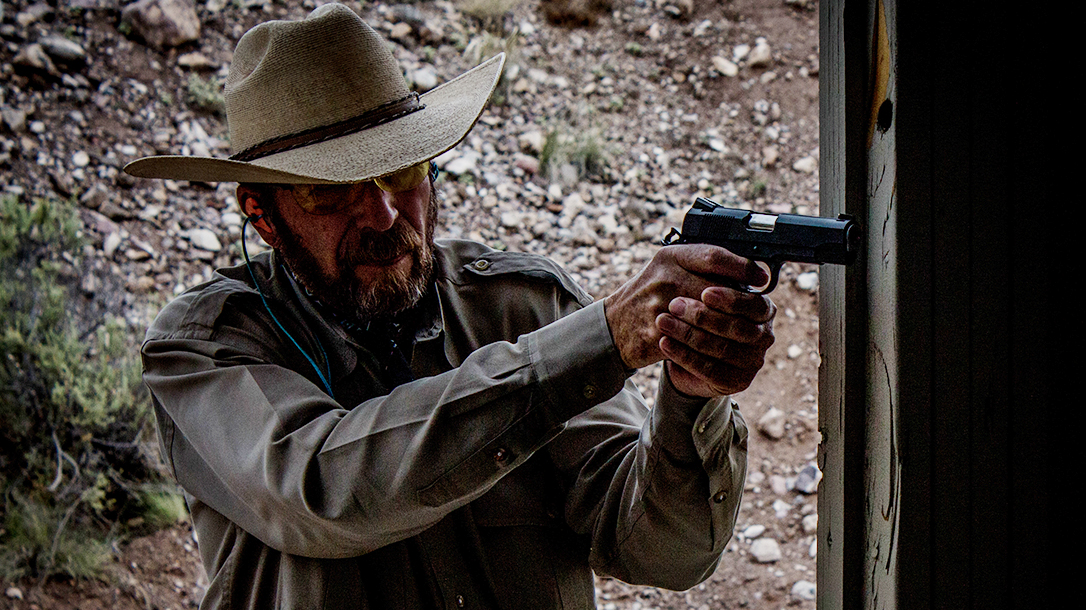
If you have a partner, they can cover your six—the area behind you—or watch additional openings or danger areas while you’re occupied with the corner. Who knows what type of situation you may be in when you have to deal with a corner. You might be in your home or at a motel. While you’re focused on clearing corners, your partner can focus on what’s behind you, and even in front of you, like doorways, windows, hiding spots, etc.
Tip #6: Know the Difference Between Single vs Double Corners
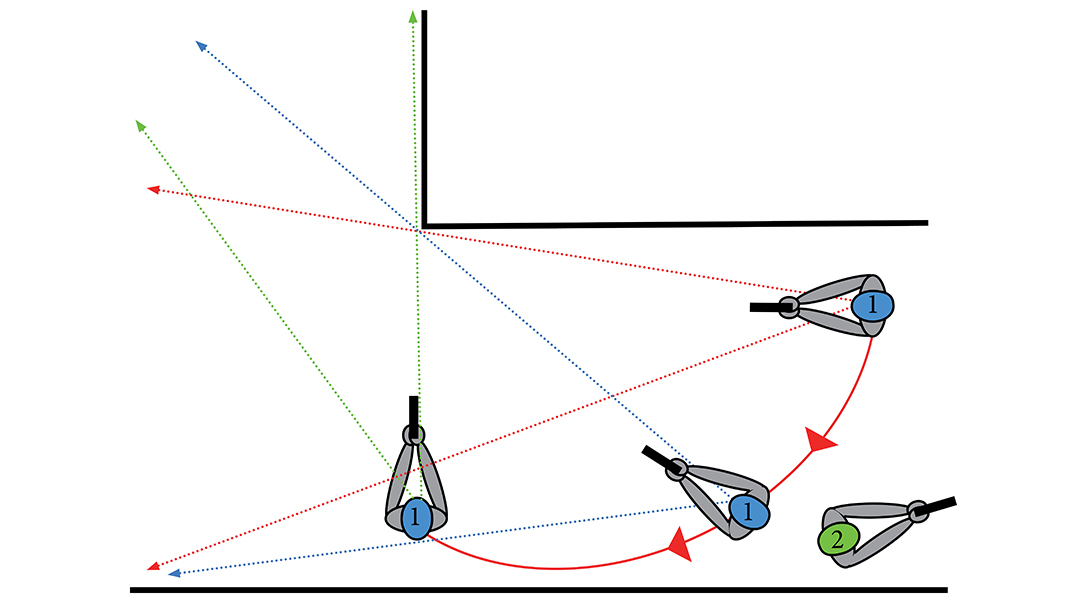
Advertisement — Continue Reading Below
There are two types of corners: singles and doubles. Know the difference and how to manage each. A single corner is like the 90-degree edge of a wall. You find them everywhere, inside and out. A double corner is like the entry to a hallway, room, or even between two cars in a parking lot. With a single corner, you have to deal with a potential threat from one direction. With a double corner, you have the potential for a threat from opposite directions.
Tip #7: Double Corners = Double the Effort
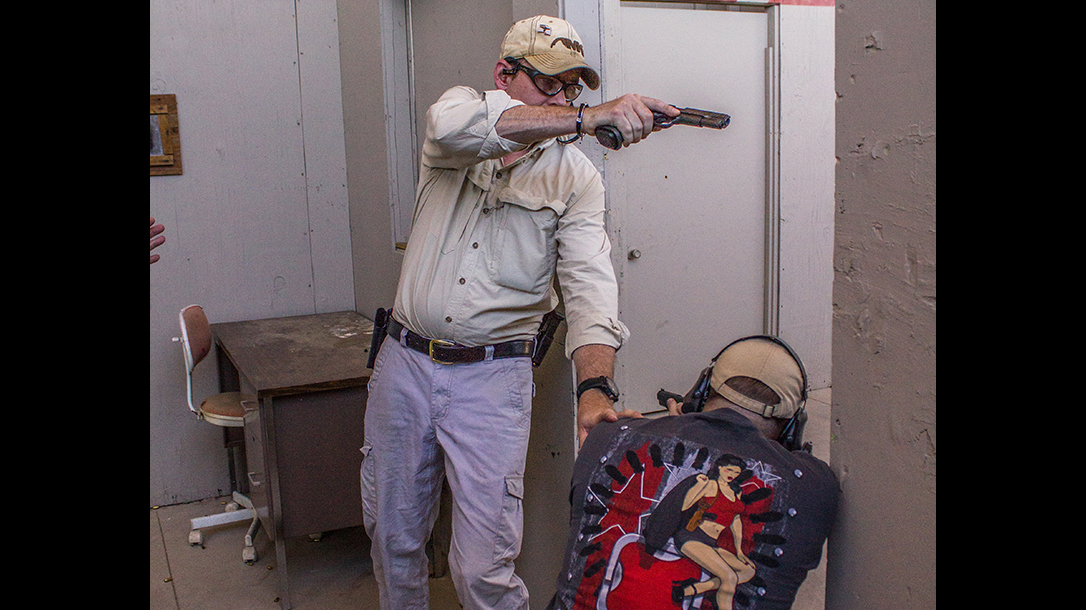
To clear a double corner alone, choose which side to clear first. Immediately after establishing one side is clear, spin on your toes and clear the other. This is a high-risk operation because to completely clear one corner, you expose yourself to the other. It’s why tactical teams are teams and not individuals. Don’t rush the process, but when you commit, move with a purpose and keep both eyes open.
Advertisement — Continue Reading Below
Tip #8: Don’t Waste Any Time After Clearing Corners
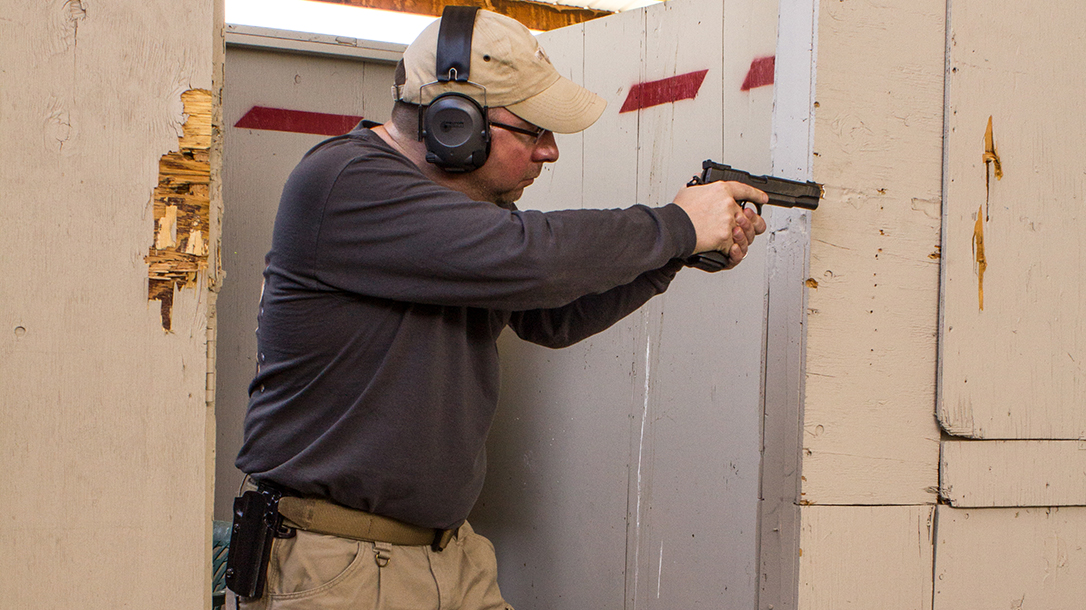
With the corner(s) clear, don’t waste time; move into the new space and take control of it. This is a reinforcement of tip #4. Don’t stand in the doorway; move into the cleared space and immediately locate the next and most critical danger area you need to focus on.
Tip #9: Work in Conjunction with Your Partner
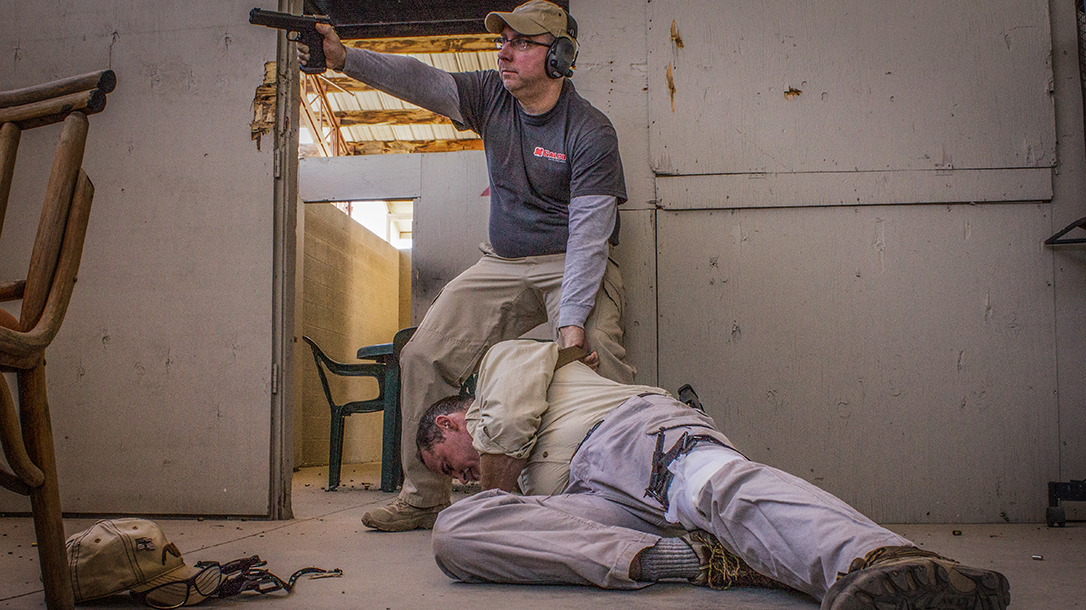
Advertisement — Continue Reading Below
Clearing corners with a partner is a good idea, but it’s something that should be practiced ahead of time. A two-man team makes corner clearing easier. With a single corner, the process is easy—see tip #5. With a double corner, it becomes more complex because team members must work together and simultaneously. Each team member picks a side, one goes low, the other high, and physical contact must be maintained to allow for silent communication of potential threats.
Tip #10: You Don’t Always Have to Move Forward
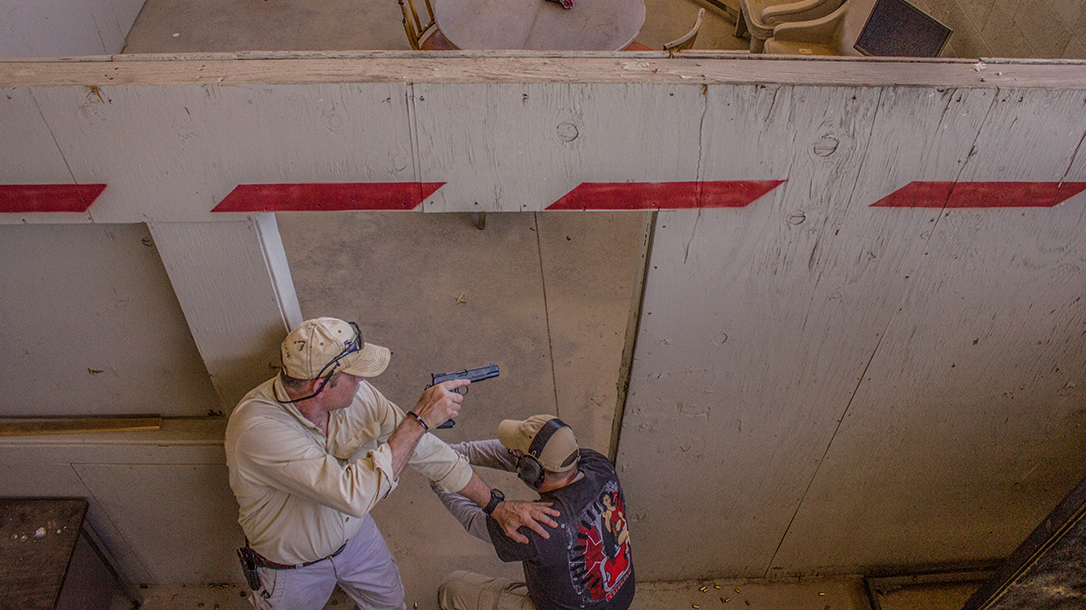
Always assess the necessity of moving forward. You can clear a corner as best as possible and still end up entering a dangerous area. Sometimes the risk is greater than the gain, and sometimes there may be another option like waiting on law enforcement, help from a buddy, or not moving forward at all.
Advertisement — Continue Reading Below
This isn’t everything you need to know. After reading this, you won’t be qualified to stack up with a SWAT team. However, what this might do is give you just enough information to save your ass while checking out that noise in the garage.
